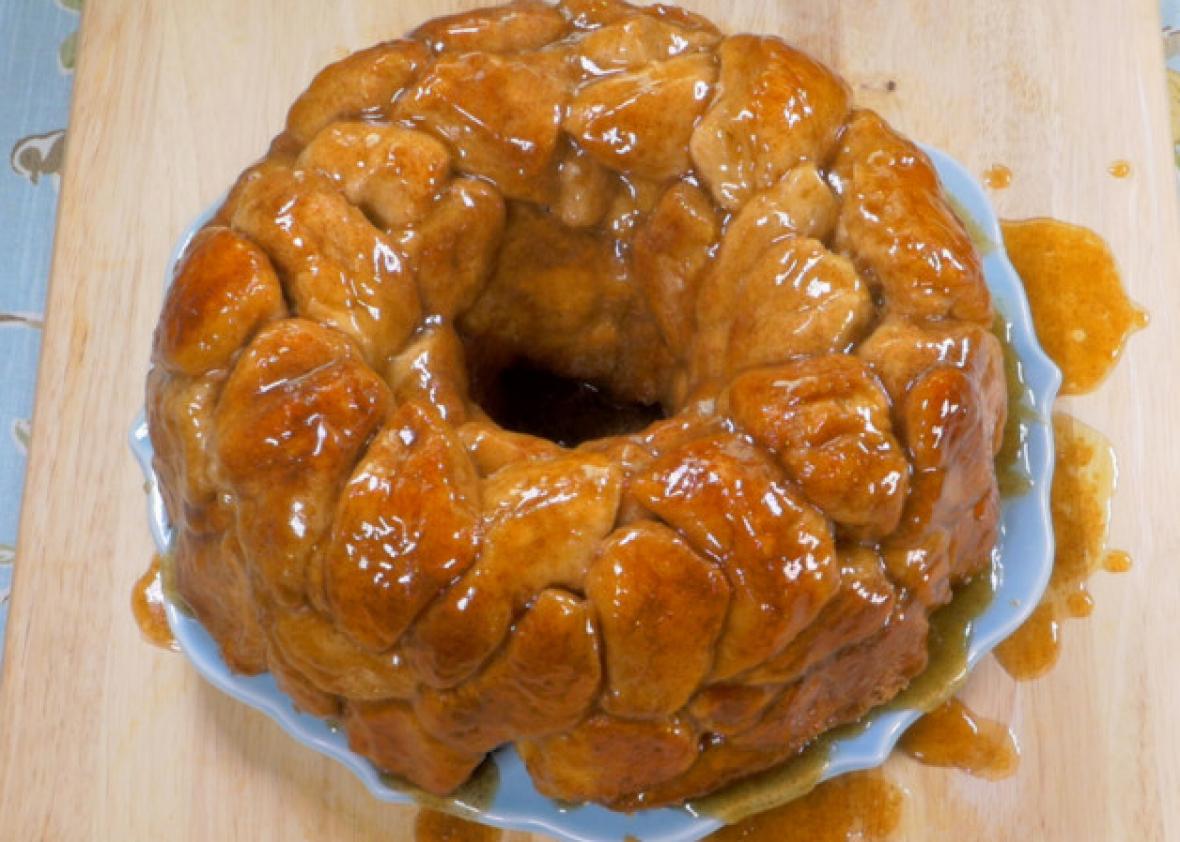GIFs Are the Ideal Format for Food Porn

Recently my editor alerted me to the existence of a MetaFilter thread called “Gif that’s what’s for dinner.” (A-plus pun idea, C-minus execution.) In it, users shared and discussed their favorite video loops for dishes like monkey bread, mozzarella sticks, and baked eggs in avocados. (They’re technically WebM videos, not GIFs, but in this case, they’re silent and loop endlessly, like GIFs.) Some of these culinary video loops have gotten millions of views on Imgur in recent months, and once you start watching them, you’ll understand why. While arguably plagiaristic and definitely not educational, they’re the perfect marriage of form and content.
Recipe video loops have been around for a while, but not quite in this format. BuzzFeed’s food section has been sprinkling short video loops in its recipe posts for years, but they’re true GIFs, just a few seconds long, each showing a discrete step in the recipe process (like, say, grating cheese). These GIFs aren’t intended to stand alone; they’re intended to be stacked on top of one another, so that you can scroll from one to the next to get an idea of how a recipe comes together. A startup called KitchenBowl uses GIFs in a similar step-by-step way, as a way to enhance traditional written recipes.
But what if you’re not actually looking to learn a recipe, you don’t have the motivation to scroll down a page, and you just want a pleasant, mouthwatering diversion for a minute at work? That’s where Imgur’s longer video loops come in. Take, for instance, this recipe for monkey bread, the gooey, cloying dessert made of cut-up biscuits baked in a thick, buttery syrup:
This video loop won’t actually teach you how to make monkey bread—for that, you’ll need to go to the food website 12 Tomatoes. (Whoever made the above video loop swiped it from a video posted to 12 Tomatoes’ Facebook page.) But I bet you watched it all the way through at least once. Ditto for this spinach-artichoke dip recipe, taken from a YouTube channel called Tasty Food:
This demo for apple roses, stolen from a TipHero video, is entrancingly efficient, transforming half an apple into a gorgeous flower in a minute flat:
Most of what makes these video loops appealing—the close-up shots, the quick cuts from one step to the next, the sparse superimposed instructions—is in the videos from which they were lifted. But silent loops are a far better format for these escapist works. To watch a video on YouTube, for instance, you need headphones—at least if you’re a cubicle dweller—and you have to actively hit “play.” A GIF-like loop requires only passive observation; it never bothers you with sound or automatically starts playing a different video after the first has ended.
Definitive proof that silent video loops are the ideal vehicle for food porn: BuzzFeed’s video “How to Make Your Own Nutella at Home,” which features music and some dialogue, has gotten approximately 1.2 million views on YouTube. An Imgur video loop made out of clips from BuzzFeed’s video has gotten about 2.6 million views. This is not great news for BuzzFeed, which could have monetized those 2.6 million views if they’d been on YouTube, but let it be a lesson to producers of food videos: Most viewers don’t care about music or narration. We just want to watch, over and over again.

